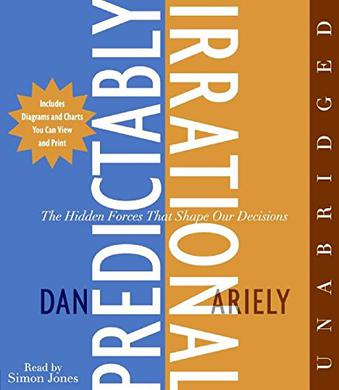The Predictably Irrational CD
内容简介
Why do our headaches persist after taking a one-cent aspirin but disappear when we take a 50-cent aspirin? Why does recalling the Ten Commandments reduce our tendency to lie, even when we couldn't possibly be caught? Why do we splurge on a lavish meal but cut coupons to save twenty-five cents on a can of soup? Why do we go back for second helpings at the unlimited buffet, even when our stomachs are already full? And how did we ever start spending $4.15 on a cup of coffee when, just a few years ago, we used to pay less than a dollar? When it comes to making decisions in our lives, we think we're in control. We think we're making smart, rational choices. But are we? In a series of illuminating, often surprising experiments, MIT behavioral economist Dan Ariely refutes the common assumption that we behave in fundamentally rational ways. Blending everyday experience with groundbreaking research, Ariely explains how expectations, emotions, social norms, and other invisible, seemingly illogical forces skew our reasoning abilities. Not only do we make astonishingly simple mistakes every day, but we make the same types of mistakes, Ariely discovers. We consistently overpay, underestimate, and procrastinate. We fail to understand the profound effects of our emotions on what we want, and we overvalue what we already own. Yet these misguided behaviors are neither random nor senseless. They're systematic and predictable—making us predictably irrational. From drinking coffee to losing weight, from buying a car to choosing a romantic partner, Ariely explains how to break through these systematic patterns of thought to make better decisions. Predictably Irrational will change the way we interact with the world—one small decision at a time.
......(更多)
作者简介
丹·艾瑞里,18岁时的一场爆炸意外,让艾瑞里全身皮肤70%灼伤,住在烧伤病房达三年之久。身穿治疗用黑色弹性紧身衣、头戴面罩的他,自嘲为“蜘蛛侠”。但恰恰是在这段漫长、无聊,而又痛苦不堪的岁月里,那套奇异的“蜘蛛侠”服装拉开了他与外界的距离,使他可以以局外人的眼光重新看待身边的世界,从此有了探索人类行为与经济关系的兴趣。最终,他成为著名行为经济学家。
丹·艾瑞里是美国麻省理工学院传媒实验室艾尔弗雷德·P·斯隆基金会和斯隆管理学院行为经济学教授、波士顿联邦储备银行研究员、普林斯顿高等研究中心研究员。在麻省理工学院期间他写了这部行为经济学的重要著作。他的文章一直在重要的学术期刊,以及《纽约时报》和《华尔街日报》的专栏上发表。
......(更多)
目录
......(更多)
读书文摘
......(更多)






